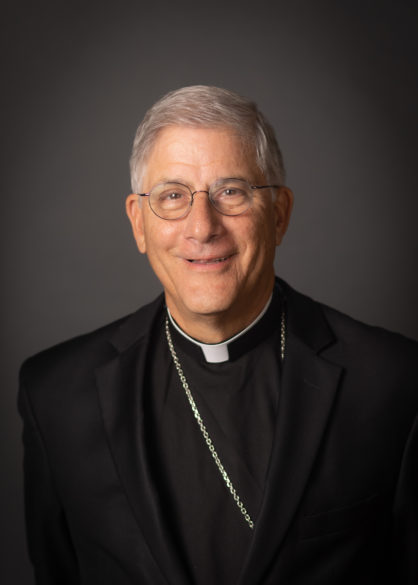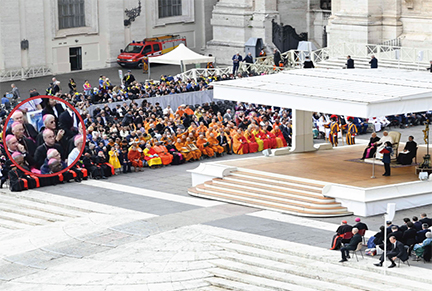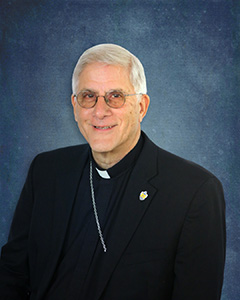By Bishop Joseph R. Kopacz, D.D.
During his homily last Sunday on the commemoration of the World Day of Prayer for the Poor, Pope Leo XIV urged world leaders to listen to the cry of the poorest, which challenges those who bear political responsibility. “There can be no peace without justice,” he said, “and the poor remind us of this in many ways – through migration as well as through their cries, which is often stifled by the myth of well-being and progress that does not take everyone into account, and indeed forgets many individuals, leaving them to their fate.”
The pope also encouraged the efforts of charity workers and volunteers and invited all Christians to seek the Kingdom of God by working to transform human coexistence into a “space of fraternity and dignity for all, without exception.”

This is a challenging time across the world where currents of nationalism and isolationism are fracturing global solidarity that is essential for a sustainable commitment on behalf of justice and peace. The Catholic Church, on the other hand, has been resolute in word and action for 2,000 years and notably in the modern era since the time of Pope Leo XIII on behalf of human dignity and international solidarity. It is unmistakable that there has been a seamless garment of Catholic Social Teachings from the heart of the church that has been carefully articulated in papal documents.
In recent history there are the writings and witness of Popes Francis and Benedict, St. John Paul II, St. Paul VI, and St. John XXIII. Each Holy Father in their generation spoke passionately to world leaders to turn away from war and unbridled nationalism in order to foster a more peaceful and interdependent fraternity of nations. During the pandemic, Pope Francis sat alone in St. Peter’s Square before the Blessed Sacrament and commended to Divine Providence the wellbeing of all nations and peoples. From imposed isolation and prayerful solitude in 2020 Pope Francis wrote his third encyclical Fratelli Tutti, (Brothers and Sisters All) on fraternal social friendship and global solidarity that springs from our shared humanity.
Pope Saint John XXIII released Pacem in Terris in the midst of the Second Vatican Council, a profound prayer and a plea for peace and solidarity in our world. A few years later St. Paul VI wrote Populorum Progressio on the Development of Peoples and prophetically taught that Integral Human Development contains the imperative of Moral, Spiritual, and Social Growth, not just material wellbeing. St. John Paul II in Sollicitudo Rei Socialis on the 20th Anniversary of Populorum Progressio in 1987 taught unreservedly that the Social Teaching of the Church is integral to its evangelizing mission. Pope Benedict in his 2005 document Deus Caritas Est wrote that “the church’s deepest nature is thus expressed in her three-fold duty: to proclaim the Word of God, celebrate the sacraments, and exercise the ministry of charity. These duties are inseparable and presuppose one another.”
The Catholic Church in the United States wholeheartedly embraces the teachings of our Holy Fathers as core values and a Gospel vision for our world. On the commemoration of the World Day of Prayer for the Poor, we are proud that as a global church we have vast experience in providing humanitarian aid and development assistance through International Agencies such as Catholic Relief Services in collaboration with NGOs and governments alike.
“The Catholic Church has long recognized that helping those in need, regardless of nationality or faith, is a moral imperative. Humanitarian and development aid are an integral part of the church’s commitment to human life and dignity. As the church pursues a more peaceful world through dialogue and diplomacy, lifesaving and life-affirming assistance act as necessary complements that allow for sustainable solutions to take root.
“A comprehensive pro-life, Catholic vision for U.S. humanitarian and development assistance recognizes that the U.S. government, alongside the church, shares a responsibility to advance the common good. Given that government institutions and the church are jointly called to create a more just world, a Catholic approach to U.S. international assistance invokes both parties as essential partners in the promotion of sustainable change that effectively addresses global needs.” (Catholic Vision for U.S. Humanitarian and Development Assistance USCCB)
Pope Leo XIV has reminded us in Dilexi Te, his first Apostolic Exhortation “that the burning heart of the church’s mission convinces me of the need to go back and re-read the Gospel, lest we risk replacing it with the wisdom of this world. The poor cannot be neglected if we are to remain within the great current of the church’s life that has its source in the Gospel and bears fruit in every time and place. This too is essential for the path to holiness.”




